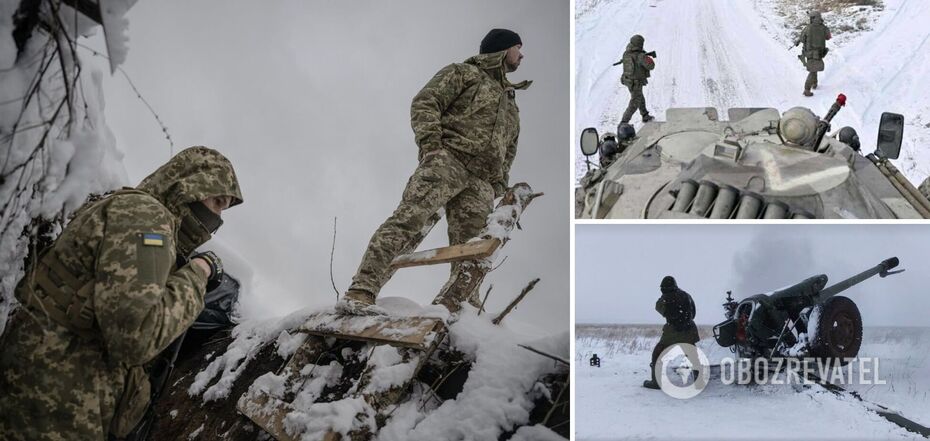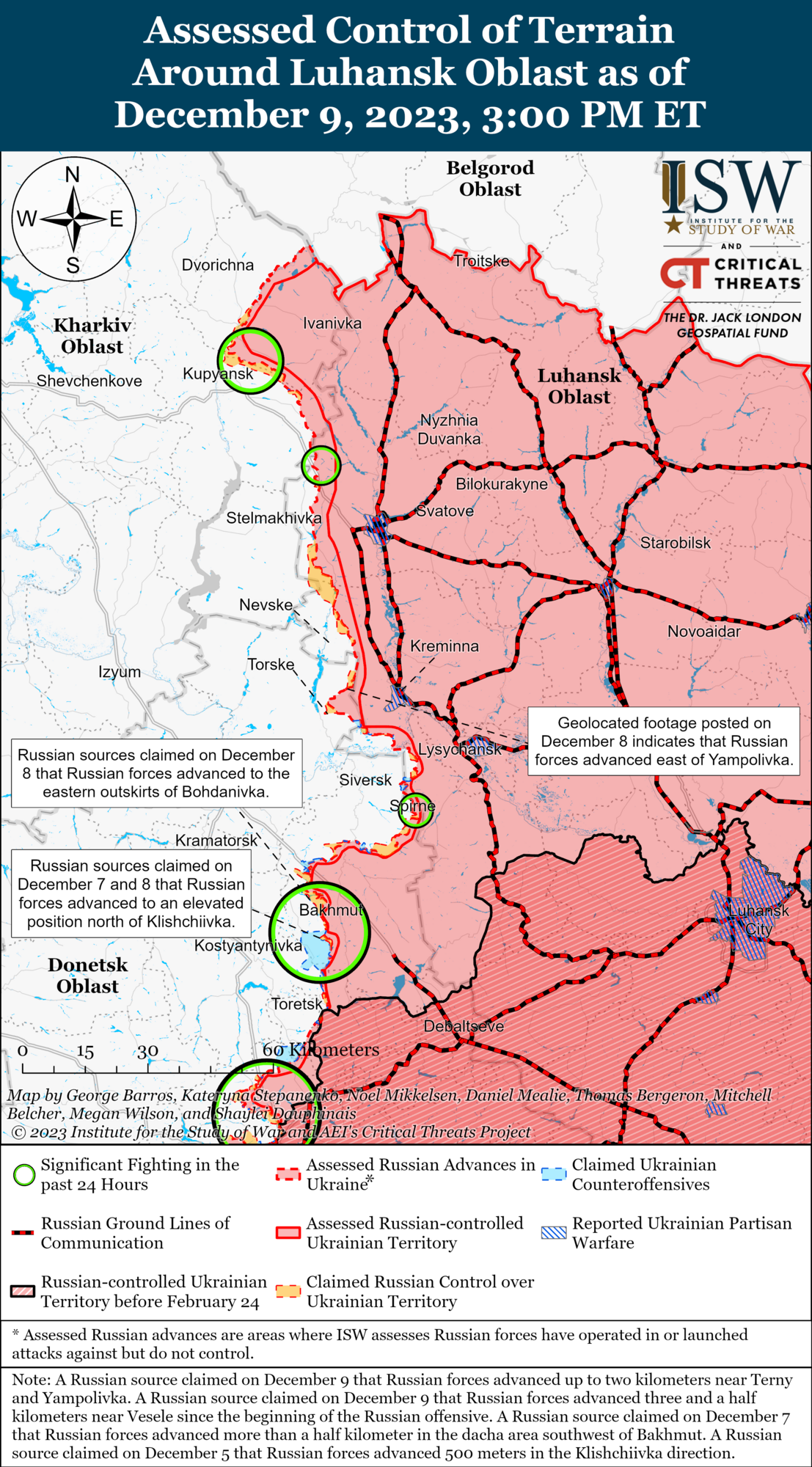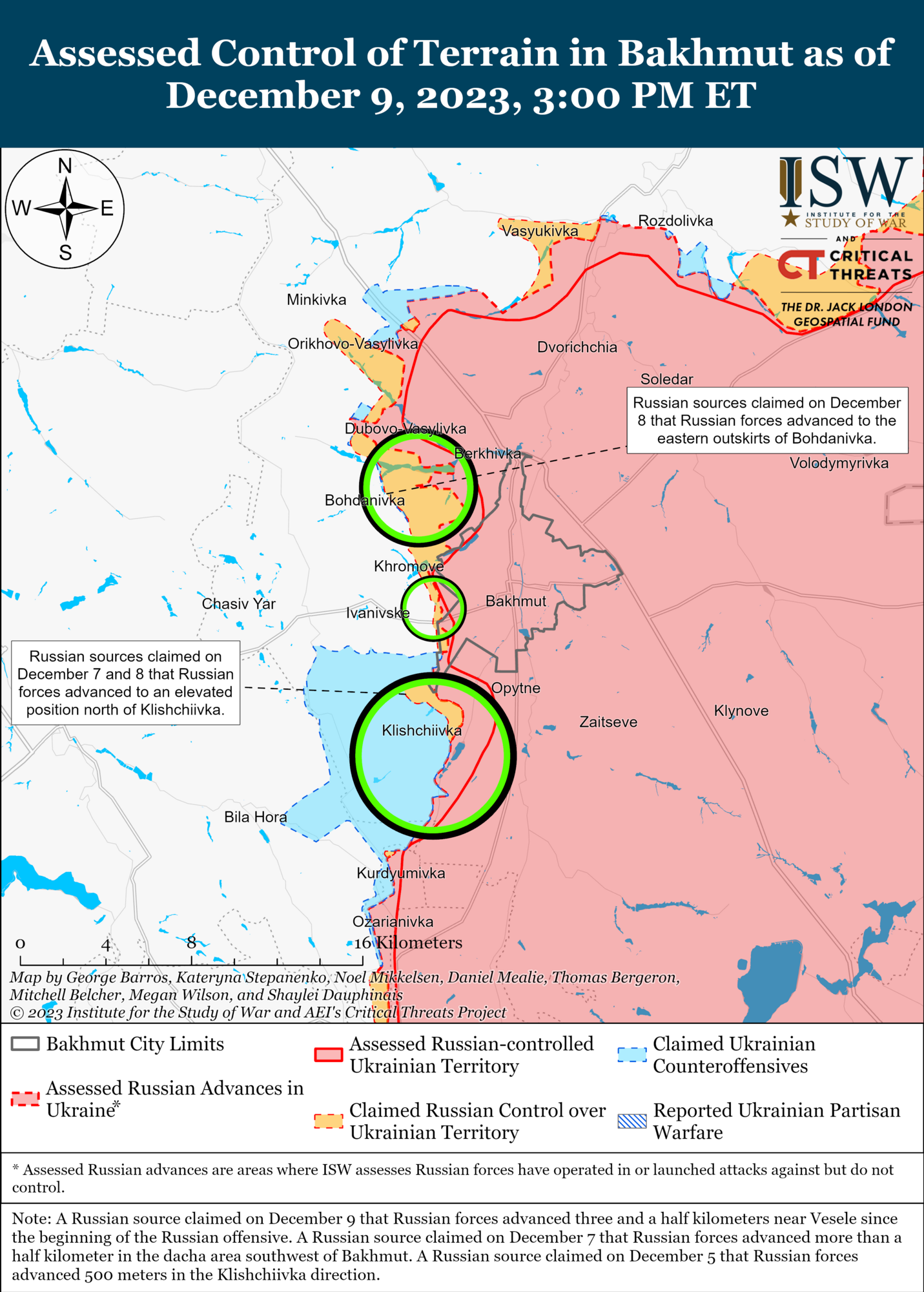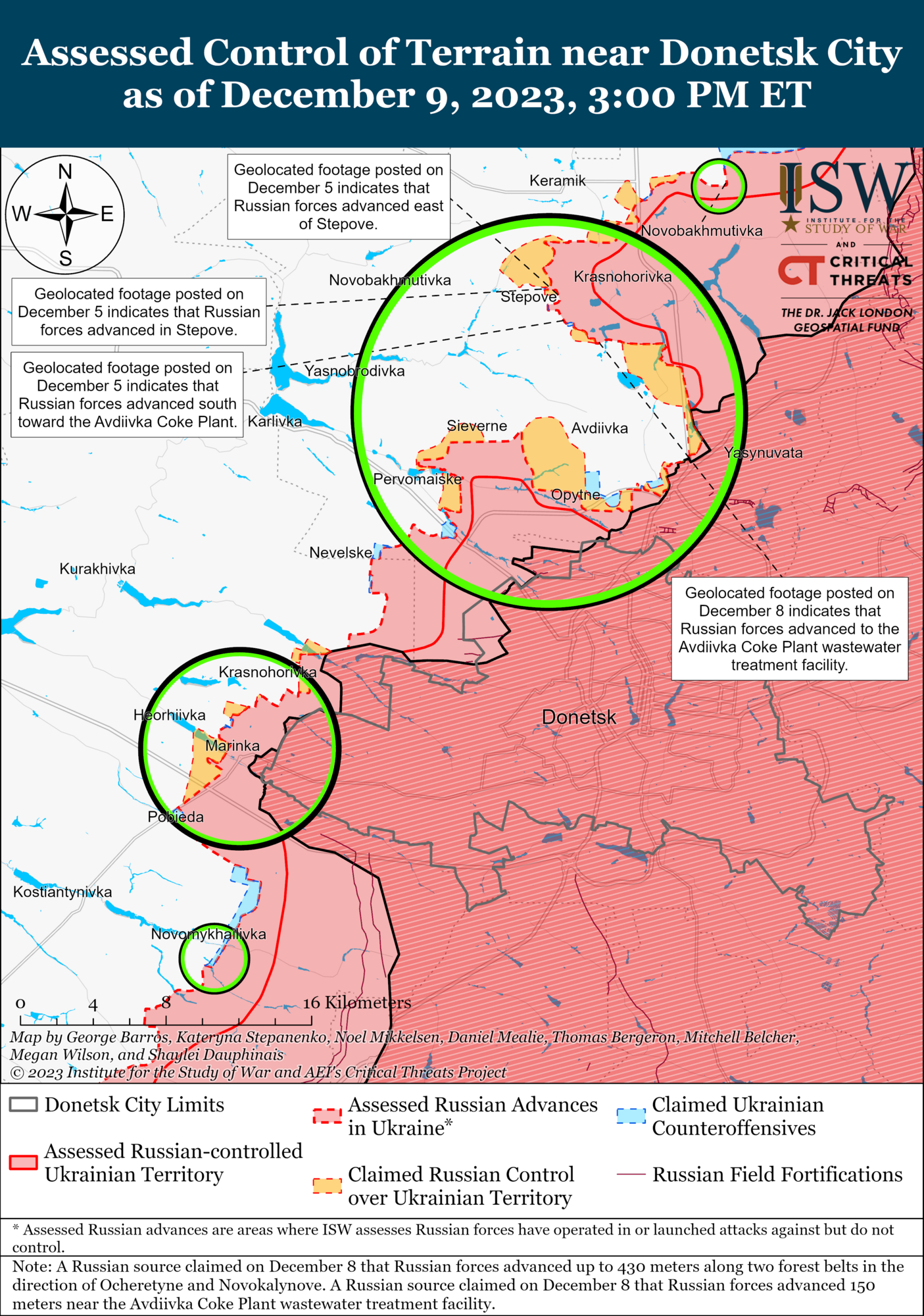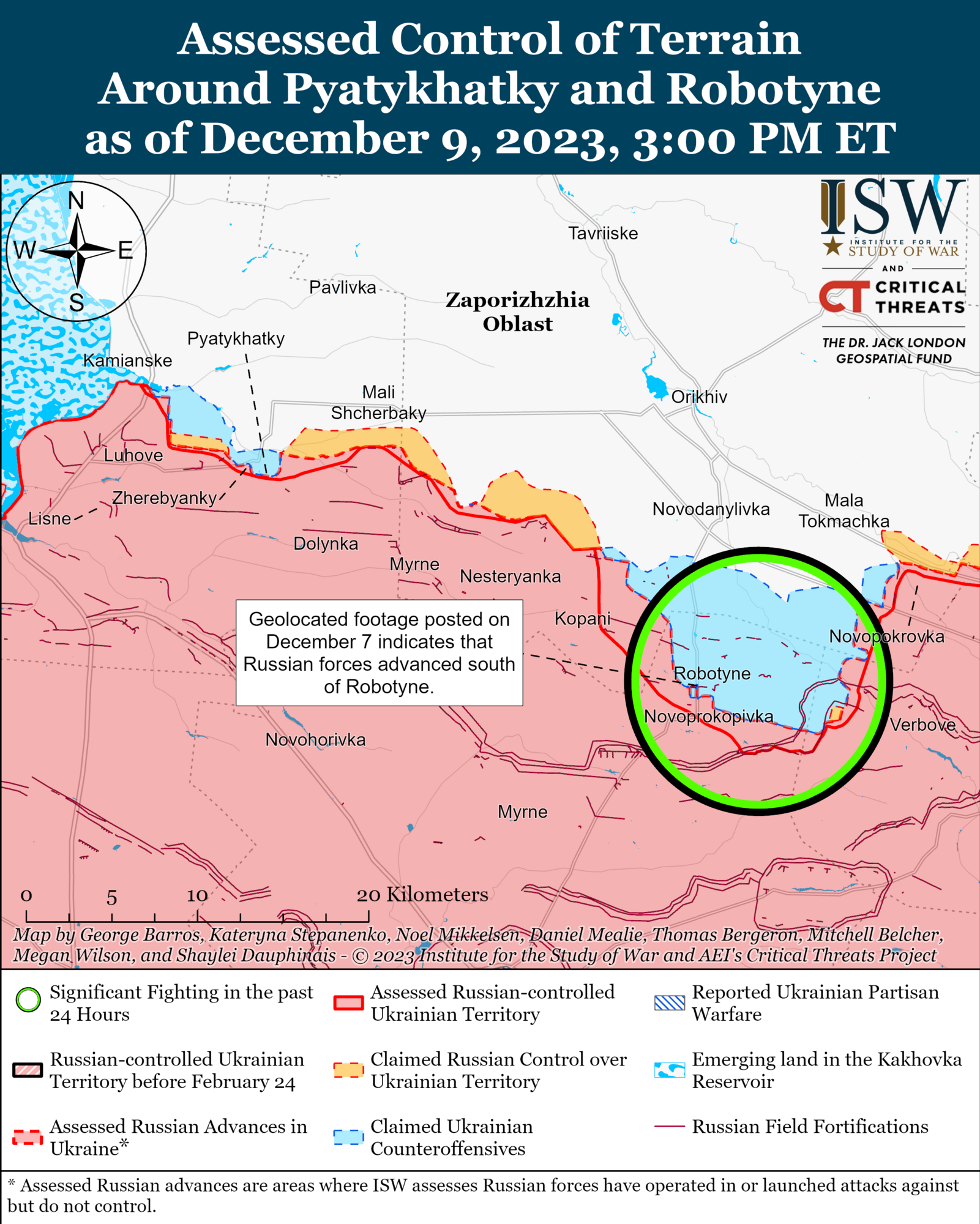War in Ukraine
The occupants conducted offensives in several directions of the front in difficult weather conditions: ISW explained their goal
Russian troops have launched offensive operations in several directions during the most difficult weather conditions of the fall and winter seasons. They did so in an attempt to seize the initiative in the battles, hoping to retain it until the presidential elections in Russia in March 2024.
This is stated in a report by the Institute for the Study of War (ISW). Analysts note that it is still unclear whether the occupiers will be able to create conditions for significant operational successes in the near future with their current attacks.
To date, the enemy continues its offensive efforts along most of the front lines in Ukraine, particularly on the border of Kharkiv and Luhansk regions, near Bakhmut and in the direction of Avdiivka, as well as in the western part of the Zaporizhzhia region.
According to ISW, the pace of fighting along the entire front line is generally consistent with the ongoing assessment: trying to regain the initiative since at least mid-November 2023.
"Recent statements by Ukrainian military officials also suggest that Russian forces have managed to seize the initiative on the border of Kharkiv and Luhansk regions, near Bakhmut, and on the Avdiivka-Donetsk axis, while Ukrainian forces retain the initiative in key areas of the south, as evidenced by their counterattacks in western Zaporizhzhia region and a sustained, larger-than-usual Ukrainian presence on the left bank of Kherson region," the analysts said.
In their view, it is noteworthy that Russian forces have made a concerted effort to regain the initiative along the entire front line and launch offensives, precisely during the most difficult weather conditions for mechanized operations in the fall. This confirms ISW's longstanding assessment that bad weather can delay, but not stop, fighting on the front lines.
It is assumed that the Russian Armed Forces decided to do this because the Ukrainian Armed Forces largely deprived them of the opportunity to seize the initiative and conduct offensives in summer weather, which is much more favorable for military operations.
Russia's concerns about the upcoming Ukrainian counteroffensive, which even preceded its launch in June 2023, kept Russian troops in the south in defense in the first half of 2023, preventing them from conducting offensives there during this period.
But over the past few weeks, the occupiers have continued offensive operations along the border of Kharkiv and Luhansk oblasts despite the snow, frost, and mud, and have conducted continuous attacks in western Zaporizhzhia region despite the same mud and strong winds in much of the south.
The analysts pointed out that large sections of the front line, especially in northeastern and eastern Ukraine, are now entering a period of severe frost as temperatures drop and muddy ground freezes, making mechanized operations easier for both sides.
"The fact that Russian forces sought to seize the initiative and conduct offensive operations in early to mid-November, during the most difficult weather conditions of the year, rather than wait for severe frosts, suggests that they are under pressure to fully seize and maintain this initiative in the first months of 2024 before the Russian presidential election in March," ISW concluded.
They believe that the Russian command also sought to bring the Ukrainian counteroffensive to a climax or to ensure that the Ukrainian Armed Forces would not be able to resume it early this winter. However, the timing of the events suggests that Ukraine decided "to significantly reduce its counteroffensive operations before the Russian offensive began on its own."
At the same time, analysts are unable to determine whether the current efforts of the Russian army will create the conditions for it to achieve significant operational success in the near future. After all, difficult weather conditions slowed down the pace of the occupiers' advance along most of the front line, increased their losses, and further undermined the morale of the soldiers.
"The rate of Russian casualties along the entire front line in Ukraine appears to be close to the rate of Russian force build-up, as previously noted. This likely indicates that Russian forces are not accumulating unused reserves to prepare for larger winter operations," ISW concluded.
As reported by OBOZ.UA, the Russian invaders are preparing to intensify assault operations in the Kupiansk direction. The Russian command is redeploying assault units there as it relies on manpower rather than equipment.
Only verified information is available on our Telegram OBOZ.UA and Viber. Do not fall for fakes!


